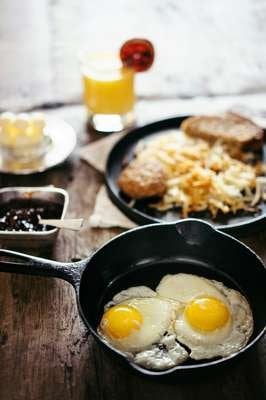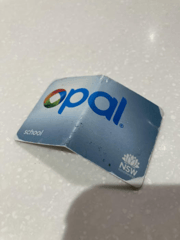Crack the code to perfect eggs every time—find out which pans to use for each cook!
- Replies 3
For many Australians, morning eggs can set the tone for the rest of the day.
Too dry or crusted over, and your day starts with disappointment, while perfectly cooked and fluffy gives the perfect start to your morning.
Whether you're scrambling for perfection, frying up a storm, or poaching your way to morning bliss, discover one of the secrets to ensure your eggs-cellent creations come out sunny side up every time.
One might think that perfecting the art of cooking eggs comes down to technique or egg quality.
However, experienced chefs know it's much more about the pan you choose.
Just like you'd pick different brushes for different painting techniques, one should opt for different pans for different styles of eggs.
The nonstick pan
Coated with a nonstick surface, potentially Teflon, non-stick pans serve as the versatile go-to for cooking eggs, accommodating various textures and cooking styles with ease.
With barely a dollop of oil or smidgen of butter, you can fry a delicate egg without any risk of stubborn stickage.
Ideal for intricate and gentler low-heat cooking, non-stick pans promise a beautifully smooth French scramble, elegantly fluffy omelette, or a sunny-side-up egg that transfers to your plate without breaking the yolk.
The stainless steel pan
Stainless steel pans hold a sort of beauty queen stature. Gorgeous to look at, these pans can slide effortlessly from stove-top to oven, sear meats wonderfully, demanding awe.
However, the eggs have a different tale to tell with their propensity to bond with your egg proteins until your breakfast is irrevocably butchered.
Now, you might wonder why one would even attempt risking a ruined breakfast.
The answer lies in knowing the secret handshake to the stainless steel club—patience and heat.
Heat your stainless steel pan till it yells for mercy. The right temperature creates an unforeseen barrier of steam and oil.
This protects your egg proteins and keeps them from developing an unhealthy attachment to the metal surface.
With such high heat at play, your eggs can get wonderfully crispy, adding texture to your morning meals.
You can also whip up a scramble, but keep an eye on it as the high heat will quickly cook your scrambled eggs in mere seconds.
The cast iron skillet
This pan is the stuff of legends. It is the rugged heavyweight that can strike fear into the hearts of many cooking enthusiasts.
A veteran in many kitchens, the mere mention of frying an egg on a cast iron skillet is enough to induce panic. All until you understand the beautiful art of working with one.
A cast-iron seasoned to perfection builds a protective layer of polymerized oil that creates a semi-non-stick surface, turning it into a fortress against stickiness.
Not as smooth going as its non-stick counterpart, but a seasoned cast-iron skillet can impress with its fried eggs—crispy edges, silken yolk, all created on a base of leftover breakfast trimmings.
The wok
One might wonder what a wok is doing in a discussion about eggs.
Usually associated with stir-fries and steamed delicacies, these pans offer a unique method of cooking eggs.
With its sides reaching for the sky, and a small base, the humble wok can surprisingly make fried egg heaven with a lot less oil than a regular frying pan or skillet.
Thanks to its unconventional shape, one creates pockets of oil at the base, calling in for a shallow fry, giving your eggs a crisp bottom and fluffed up egg whites.
Sunny-side-up, deep-fried (with a small pool of oil), or scrambled—woks do it all.
Now that you’ve cooked your perfect egg, cleaning the pan comes after.
Worry not! You can check out this common household ingredient that you can use to keep your pans looking brand new, or try this supermarket item to give your pans a makeover.

Go on, transform your egg-making game and let us know your morning victories by posting your breakfast stories in the comments section below.
Too dry or crusted over, and your day starts with disappointment, while perfectly cooked and fluffy gives the perfect start to your morning.
Whether you're scrambling for perfection, frying up a storm, or poaching your way to morning bliss, discover one of the secrets to ensure your eggs-cellent creations come out sunny side up every time.
One might think that perfecting the art of cooking eggs comes down to technique or egg quality.
However, experienced chefs know it's much more about the pan you choose.
Just like you'd pick different brushes for different painting techniques, one should opt for different pans for different styles of eggs.
The nonstick pan
Coated with a nonstick surface, potentially Teflon, non-stick pans serve as the versatile go-to for cooking eggs, accommodating various textures and cooking styles with ease.
With barely a dollop of oil or smidgen of butter, you can fry a delicate egg without any risk of stubborn stickage.
Ideal for intricate and gentler low-heat cooking, non-stick pans promise a beautifully smooth French scramble, elegantly fluffy omelette, or a sunny-side-up egg that transfers to your plate without breaking the yolk.
The stainless steel pan
Stainless steel pans hold a sort of beauty queen stature. Gorgeous to look at, these pans can slide effortlessly from stove-top to oven, sear meats wonderfully, demanding awe.
However, the eggs have a different tale to tell with their propensity to bond with your egg proteins until your breakfast is irrevocably butchered.
Now, you might wonder why one would even attempt risking a ruined breakfast.
The answer lies in knowing the secret handshake to the stainless steel club—patience and heat.
Heat your stainless steel pan till it yells for mercy. The right temperature creates an unforeseen barrier of steam and oil.
This protects your egg proteins and keeps them from developing an unhealthy attachment to the metal surface.
With such high heat at play, your eggs can get wonderfully crispy, adding texture to your morning meals.
You can also whip up a scramble, but keep an eye on it as the high heat will quickly cook your scrambled eggs in mere seconds.
The cast iron skillet
This pan is the stuff of legends. It is the rugged heavyweight that can strike fear into the hearts of many cooking enthusiasts.
A veteran in many kitchens, the mere mention of frying an egg on a cast iron skillet is enough to induce panic. All until you understand the beautiful art of working with one.
A cast-iron seasoned to perfection builds a protective layer of polymerized oil that creates a semi-non-stick surface, turning it into a fortress against stickiness.
Not as smooth going as its non-stick counterpart, but a seasoned cast-iron skillet can impress with its fried eggs—crispy edges, silken yolk, all created on a base of leftover breakfast trimmings.
The wok
One might wonder what a wok is doing in a discussion about eggs.
Usually associated with stir-fries and steamed delicacies, these pans offer a unique method of cooking eggs.
With its sides reaching for the sky, and a small base, the humble wok can surprisingly make fried egg heaven with a lot less oil than a regular frying pan or skillet.
Thanks to its unconventional shape, one creates pockets of oil at the base, calling in for a shallow fry, giving your eggs a crisp bottom and fluffed up egg whites.
Sunny-side-up, deep-fried (with a small pool of oil), or scrambled—woks do it all.
Now that you’ve cooked your perfect egg, cleaning the pan comes after.
Worry not! You can check out this common household ingredient that you can use to keep your pans looking brand new, or try this supermarket item to give your pans a makeover.
Key Takeaways
- Nonstick pans are ideal for most egg styles and provide easy release with minimal oil or butter needed.
- Preheating a stainless steel pan to a high temperature helps prevent eggs from sticking by creating a steam barrier.
- A well-seasoned cast iron skillet offers a low-stick surface suitable for creating fried eggs with crispy edges.
- A wok can be used for frying eggs in minimal oil and also for making various egg dishes.
Last edited by a moderator:








